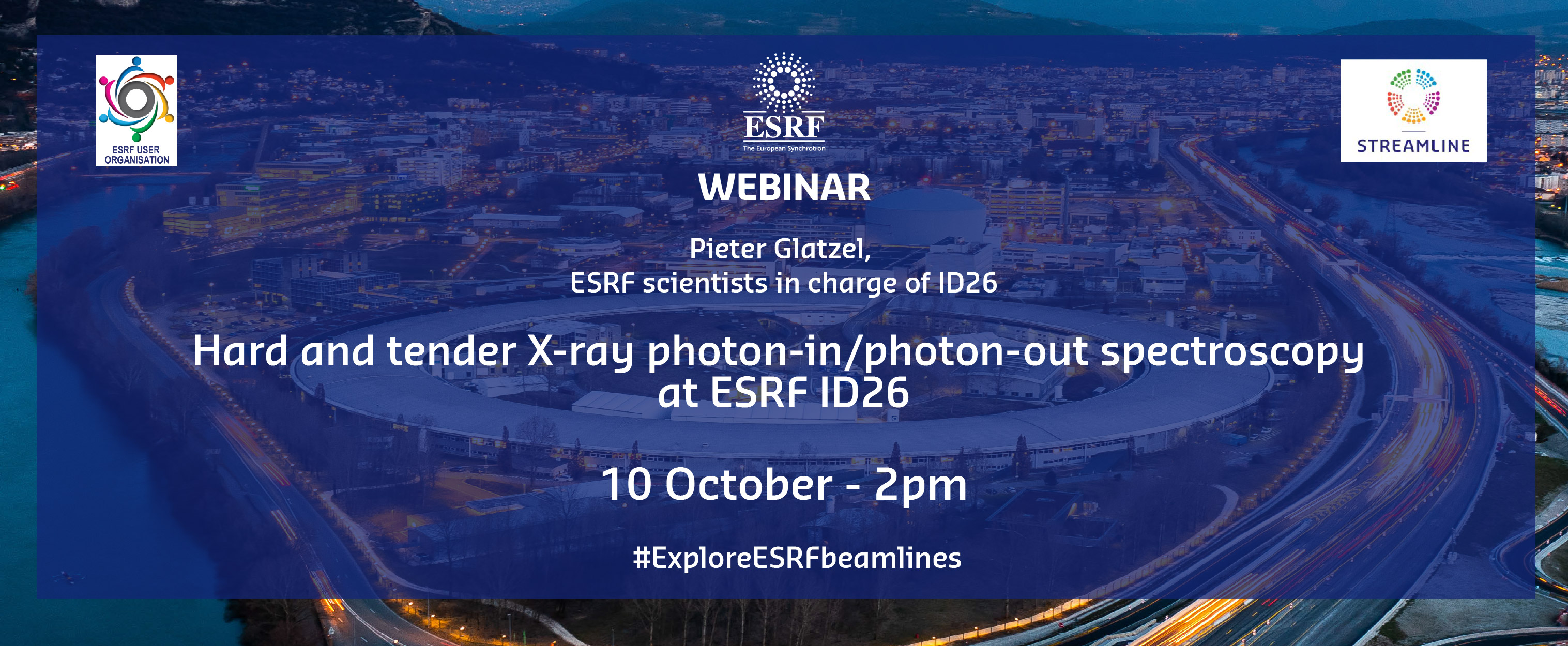EXPLORE ESRF BEAMLINES - ID26 Hard and tender X-ray photon-in/photon-out spectroscopy at ESRF ID26 - Pieter Glatzel

Hard and tender X-ray photon
-in/photon -out spectroscopy at ESRF ID26
Abstract
ID26 is dedicated to X-ray absorption (photon-in) and emission (photon-out) spectroscopy of complex systems in the tender and hard X-ray range. The high-brilliance X-ray beam allows for spectroscopic studies of samples with low analyte concentration and challenging matrix. X-ray emission spectroscopy is performed by means of crystal analyzer spectrometers [1,2]. By combining the tunable incident energy with an emission spectrometer, it is possible to take advantage of resonance effects that can provide detailed information on the electronic structure.
The atomic coordination and electronic structure of an X-ray absorbing atom are studied by extended X-ray absorption fine structure (EXAFS), X-ray absorption near edge structure (XANES), X-ray emission (XE) and resonant inelastic X-ray scattering (RIXS) spectroscopy. The techniques probe occupied and unoccupied electron orbitals, providing a wealth of information. It is thus possible to study orbital splitting, spin- and oxidation states as well as the coordination symmetry and ligand type. RIXS gives access to element-specific excitations of only a few eV that can arise from local (e.g., d-d), nearest neighbour (e.g., charge transfer) and collective excitations.
With the tender and hard X-ray probe, very few restrictions apply to the sample environment. ID26 can host cryostats and cells for in-situ and operando studies [3] to carry out experiments in applied sciences including coordination chemistry, (bio)catalysis, materials science, electro-chemistry and environmental sciences.
[1] Glatzel et al. https://doi.org/10.1107/S1600577520015416
[2] Rovezzi et al. https://doi.org/10.1107/S160057752000243X
[3] Suarez Orduz et al. https://doi.org/10.1002/cmtd.202300044



